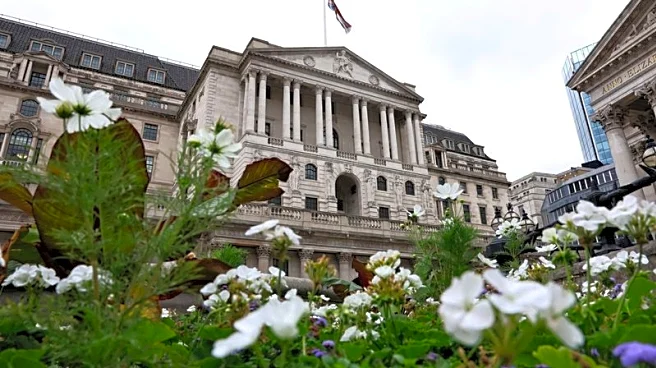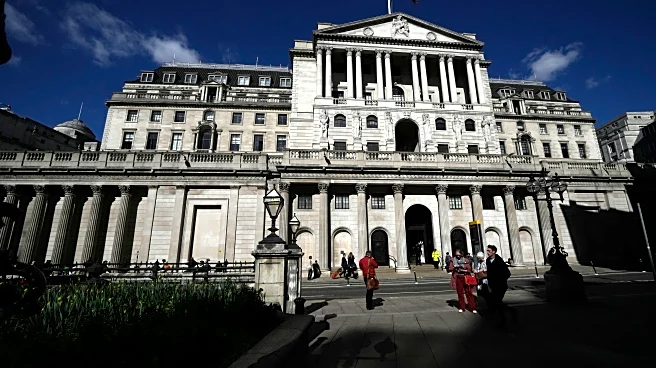What is the story about?
What's Happening?
The Bank of England has decided to keep interest rates steady at 4% due to ongoing concerns about inflation. The decision was made by the bank's monetary policy committee, which voted 7-2 in favor of maintaining the current rate. Despite recent rate cuts, inflation remains above the bank's target, prompting a cautious approach to monetary policy. The bank also announced a slowdown in its quantitative tightening program to avoid disrupting bond markets. This decision reflects the bank's efforts to balance inflation control with economic stability, as the UK faces challenges such as rising food prices and a slowing job market.
Why It's Important?
The Bank of England's decision to hold interest rates highlights the challenges central banks face in managing inflation while supporting economic growth. With inflation running above target, the bank must carefully navigate its monetary policy to avoid exacerbating economic instability. The slowdown in quantitative tightening aims to prevent disruptions in bond markets, which could impact government borrowing costs. This decision underscores the delicate balance central banks must strike between controlling inflation and fostering economic growth, particularly in the face of external pressures such as volatile global markets.
What's Next?
The Bank of England will continue to monitor inflation and economic indicators to determine future policy actions. The bank's cautious approach suggests that any further rate cuts will be gradual and carefully considered. Policymakers will need to assess the impact of inflation on consumer spending and employment, as well as the effects of quantitative tightening on bond markets. The bank's decisions will be closely watched by financial markets and government officials, as they have significant implications for economic stability and fiscal policy.
Beyond the Headlines
The decision to slow quantitative tightening raises questions about the long-term impact of central bank policies on financial markets and public finances. As the bank reduces its bond holdings, it must consider the effects on market liquidity and government borrowing costs. The interplay between monetary policy and fiscal stability is a critical issue, particularly as governments face rising debt levels and economic uncertainty. The bank's actions may also influence broader discussions about the role of central banks in managing economic cycles and supporting sustainable growth.
AI Generated Content
Do you find this article useful?















